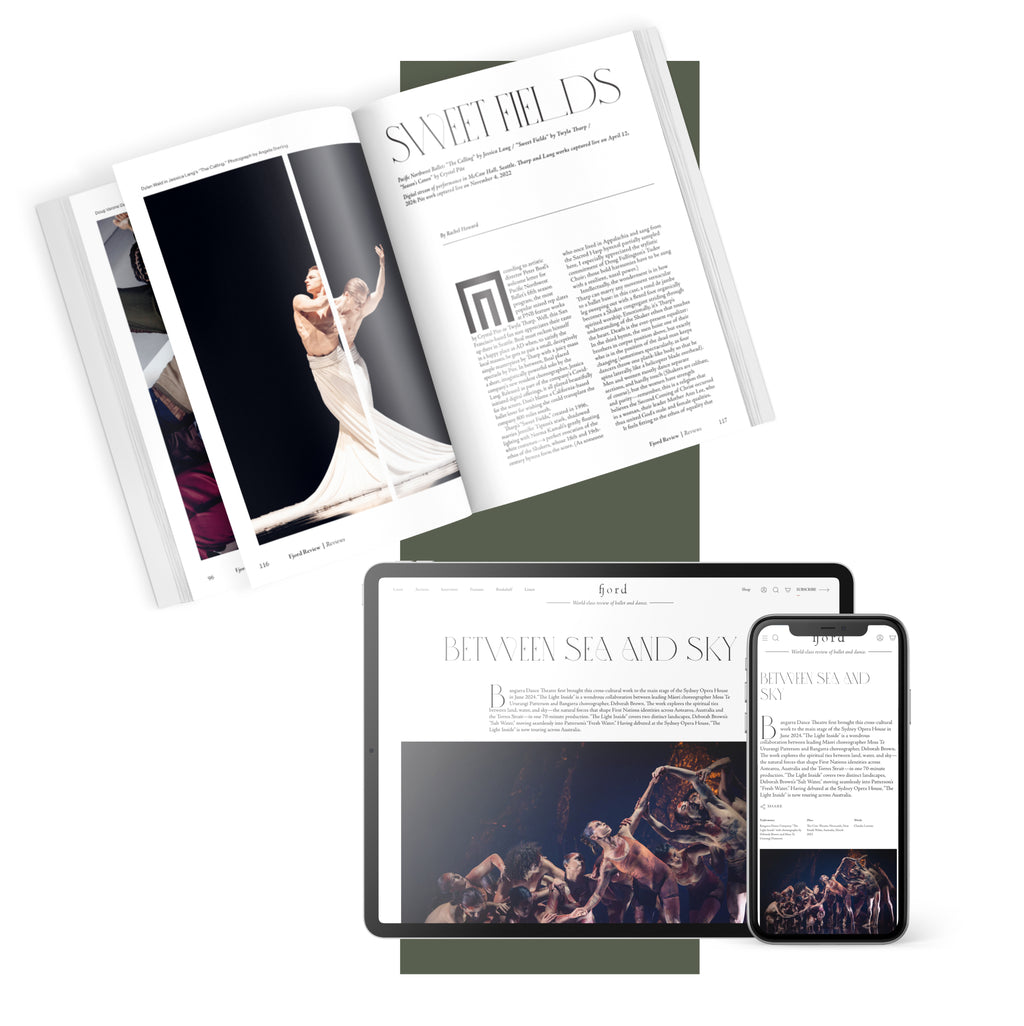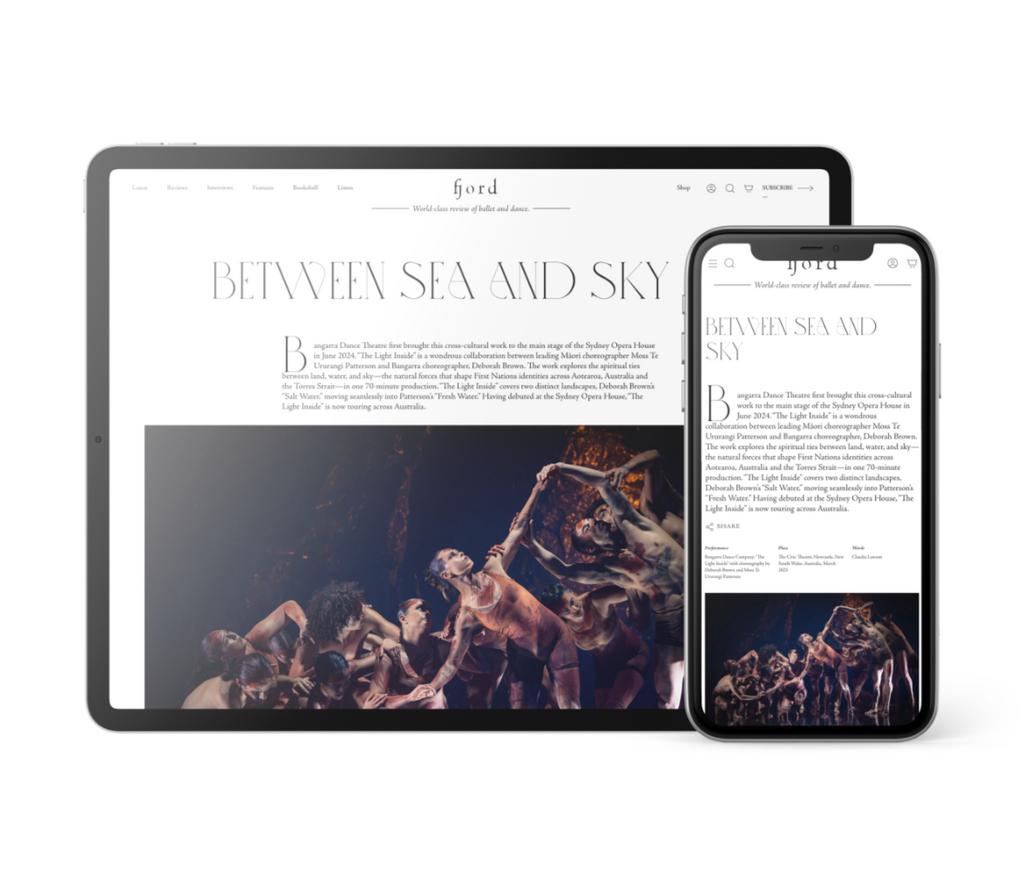The work is laudable for its imaginative structure and for its total integration of movement into the theatrical experience. From the moment you enter the theater, interest is provoked by five women posing like statues amid the folds of classical drapery suspended against the upstage wall. Costumed in cream colored Greco-Roman style garb, designed by Tamar Mogendorff in collaboration with Jessica Mitrani, the five are not frozen in time. They are breathing humans, who continuously shift their poses in subtle ways as the narrator skates about the stage. The formal exposition begins as the five step out of the “curtains of history” like lost goddesses to reclaim their silenced narratives. They deliver solo lines and perform group movement sequences as a female chorus illustrating and responding to the narrator and the aerially danced action.
The narrator, played by Sarah Lemp, comes forward reading a heartfelt letter to Virginia Woolf—speaking to the issues Woolf disclosed in A Room of One’s Own. Dressed as a contemporary woman in gym shorts on roller skates, she updates Woolf on the current state of women’s affairs, reporting that even with the advantages of money, space, and the accumulation of women’s knowledge, we have still not overcome the marginalization of women. An ongoing communication to Woolf loosely ties the scenes together in a credible and inventive framework.
With original writing by Marie Glancy O’Shea and a creative stream of movement tableaux on the ground and in the air by Giobbi, a renowned aerialist, the scenes explore origin stories, past eras, and present crises in a quest to find a path forward. The narrator opens an overstuffed tome for story time as the chorus, like a huddle of eager children, gather at her feet in rapt attention. She begins with the story of Adam and Eve in the Garden of Eden as she attempts to restore the unchronicled female perspective, or what Woolf called the “accumulation of unrecorded life.” From the patriarchal angle, the biblical couple’s fall from paradise was the fault of Eve and all her sex. Her action of tasting the forbidden fruit and tempting Adam with it was the “original sin,” which caused the ancient and ongoing mistrust, derision, and suppression of women.










comments